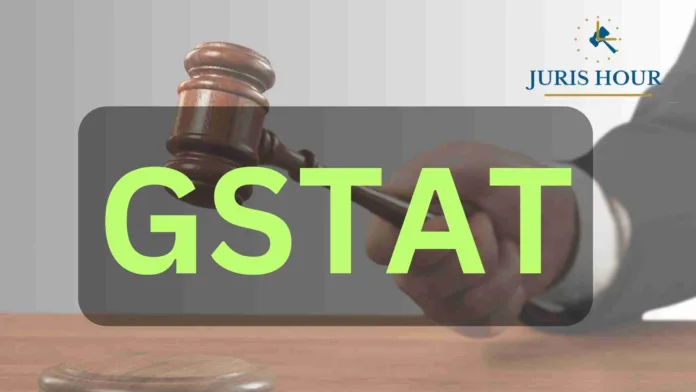The Goods and Services Tax Appellate Tribunal (GSTAT) interview process for the year 2025 is gaining significant attention as candidates are to face rigorous evaluation on core GST provisions. Aspirants for judicial and technical member posts are being tested on their in-depth understanding of key GST laws and their practical application.
The interview panel may focus on evaluating candidates across four main topics:
1. Section 9 vs Section 10 of the CGST Act: Regular vs Composition Scheme
Section 9 represents the standard GST levy, applicable to most taxpayers and involving regular tax rates, monthly returns, and eligibility for Input Tax Credit (ITC). In contrast, Section 10, or the Composition Scheme, offers a simplified tax structure for small businesses with a turnover threshold (up to ₹1.5 crore), a lower flat rate of tax, but excludes ITC and inter-state supply eligibility.
Illustration:
Section 9 (Regular Taxpayer):
ABC Enterprises, a wholesaler in Delhi with a turnover of ₹2 crore, is registered under Section 9. It charges 18% GST on its supplies, files GSTR-1 and GSTR-3B monthly, and claims Input Tax Credit on its purchases.
- Section 10 (Composition Dealer):
XYZ Kirana Store, a small grocery shop with ₹50 lakh turnover, opts for the Composition Scheme under Section 10. It pays 1% GST on turnover quarterly and cannot collect GST from customers or claim ITC. It files GSTR-4 annually.
2. Composite Supply vs Mixed Supply under GST
Interview panels may examine candidates’ grasp of composite and mixed supply, concepts that affect GST rate determination:
A composite supply includes a principal supply bundled with ancillary goods or services (e.g., a mobile phone with charger), taxed at the principal rate.
A mixed supply, like a gift pack with unrelated items, is taxed at the highest applicable GST rate among the items.
Illustration:
Composite Supply:
Mobile Phone + Charger sold together as a package.
The principal supply is the mobile phone.
The entire bundle is taxed at 18% GST, which is the rate applicable to the mobile.
Mixed Supply:
Gift Hamper containing chocolates (12%), perfume (18%), and a watch (28%) sold for a single price.
3. RCM vs ITC: Understanding the Reverse Charge Mechanism
Reverse Charge Mechanism (RCM) is a scenario where the recipient of goods/services pays GST, rather than the supplier. This is applicable in certain notified transactions or when dealing with unregistered suppliers.
RCM contrasts with Input Tax Credit (ITC), a mechanism where businesses offset the tax paid on purchases against their output tax liability. Candidates are expected to clearly differentiate between paying tax under RCM and claiming ITC, and explain the compliance requirements under Section 16 and Rule 36 of CGST Rules.
Illustration:
RCM (Reverse Charge):
ABC Ltd. hires a Goods Transport Agency (GTA) to deliver goods.
GTA is under RCM (if it doesn’t pay tax on forward charge).
ABC Ltd. pays 5% GST directly to the government and reports it under RCM.
ITC (Input Tax Credit):
ABC Ltd. also purchases raw materials from a registered dealer and pays 18% GST.
- This GST paid is eligible as ITC, which ABC Ltd. can use to offset its output tax.
4. Can RCM Taxpayers Claim ITC?
A common interview question is whether a taxpayer who pays GST under RCM is eligible for Input Tax Credit. The answer is yes — provided the tax has been actually paid to the government, and the inputs/services are used for business purposes. This is supported by Section 16 of the CGST Act, which allows ITC for taxes paid under both forward and reverse charge mechanisms.
Illustration:
ABC Pvt. Ltd. pays ₹10,000 as GST under RCM for legal services received from an individual advocate.
Since the payment is for business purposes, and the tax is paid in cash (as required under RCM), ABC Pvt. Ltd. can claim ₹10,000 as ITC in the next eligible GSTR-3B return.
Why Do You Want to Be a GSTAT Member?
In addition to technical proficiency, interviewers seek to understand the motivational drive behind joining GSTAT. Strong candidates typically emphasize their commitment to tax jurisprudence, interest in upholding the rule of law, and a desire to contribute to the timely and fair resolution of indirect tax disputes in India.
Conclusion
The GSTAT interview process is a gateway for professionals to enter a quasi-judicial role that upholds the backbone of India’s indirect tax system.
Read More: ₹643 Crore GST Fraud Busted by DGGI; Key Accused Nabbed in Bengaluru

